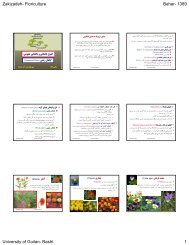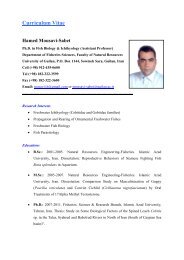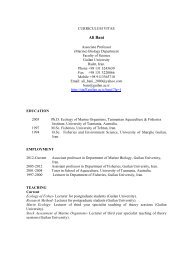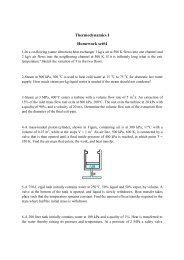Medical Tourism in Developing Countries
Medical Tourism in Developing Countries
Medical Tourism in Developing Countries
- No tags were found...
You also want an ePaper? Increase the reach of your titles
YUMPU automatically turns print PDFs into web optimized ePapers that Google loves.
Promot<strong>in</strong>g <strong>Medical</strong> <strong>Tourism</strong> ● 11518th, 21st, and 23rd. For the sake of comparison, S<strong>in</strong>gapore ranks thehighest <strong>in</strong> the world, with a score of 6.7, the United States at 6.4, and thelowest rank of the 59 countries is Bolivia, with 1.4.WaterInvestments <strong>in</strong> water systems are made for a variety of reasons <strong>in</strong>clud<strong>in</strong>gthe provision of dr<strong>in</strong>k<strong>in</strong>g water, mov<strong>in</strong>g of waste, irrigation, and the productionof goods and services. Intermittent water supplies, <strong>in</strong>sufficientcoverage, and <strong>in</strong>adequate purify<strong>in</strong>g methods are all impediments to thedevelopment of a Western-oriented tourist <strong>in</strong>dustry and to economic development<strong>in</strong> general. As <strong>in</strong> the case of power, the large hospitals have <strong>in</strong>vested<strong>in</strong> their own source of water and purification systems.Accord<strong>in</strong>g to table 5.4, the Philipp<strong>in</strong>es, Thailand, and India havethe smallest percent of population with susta<strong>in</strong>able access to a water source(85, 85, and 86 percent respectively). For the sake of comparison, the averagefor develop<strong>in</strong>g countries is 79 percent. 79Waste ManagementBrochures promot<strong>in</strong>g medical tourism <strong>in</strong> third world countries often showbeautiful poolside sunbathers sipp<strong>in</strong>g p<strong>in</strong>a coladas while recover<strong>in</strong>g fromtheir medical procedure. Potential travelers are unlikely to ponder how thesunbathers’ waste is managed. Yet, waste disposal and sewage treatment iscrucial to the function<strong>in</strong>g of a tourist dest<strong>in</strong>ation or major medical centerthat attracts people who, by def<strong>in</strong>ition, create waste. Insufficient water andenergy supply and lack of sanitation hamper tourism development, as wastecollection is very poor <strong>in</strong> most LDCs and recycl<strong>in</strong>g plants do not exist.Donald Reid said that <strong>in</strong> develop<strong>in</strong>g countries, sophisticated technology isnot available, or where it is, it is too expensive to <strong>in</strong>stall and ma<strong>in</strong>ta<strong>in</strong>. 80This importance of waste management is not lost on dest<strong>in</strong>ation countrygovernments (for example, Malaysia’s strategy of tourism development specificallynotes the need to address the “serious problem of . . . dump<strong>in</strong>g ofwaste material” 81 ).Tourists and waste disposal are tied together <strong>in</strong> a mutually self-re<strong>in</strong>forc<strong>in</strong>gcycle <strong>in</strong>sofar as the presence of tourists <strong>in</strong>creases the need for a waste disposalsystem while the absence or <strong>in</strong>adequacy of such a system negatively affectstourists. This last po<strong>in</strong>t <strong>in</strong>cludes the fact that tourists face a health hazardif waste is improperly managed. In addition, it means that tourists will avoidthose spots where this particular lapse <strong>in</strong> <strong>in</strong>frastructure development isevident.
















